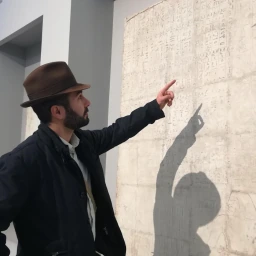A well-established folk tradition, widespread among the valleys of Biella in Piedmont, states that St. Eusebius brought the Black Madonna to the Sanctuary of Oropa. Eusebius, the first bishop of Vercelli since 345, was a fervent opponent of the Arianism. When he refused to subscribe the edicts of the Council of Milan (355), which affirmed the Arian theological positions, the Emperor Constantius II exiled him to the Holy Land. The bishop could return to Piedmont in 363, when Julian ascended the throne of Rome and, according to the hagiographic sources, bringing with him from the East a very precious Marian relic, carved by the evangelist Luke.

Tradition states that the statuette of Our Lady, today depicted as black, was first hidden in Fontainemore, to prevent the Aryans from destroying it, and then taken to the Biellese mountains of Oropa. There it was placed under a large solitary boulder, one of those that we now call erratic, typical of Alpine valleys. The rugged and untouched place, elevated about one thousand two hundred meters above the sea level, became the site of an enormous devotion. It inspired in the following centuries the construction of one of the most important worship places in northern Italy.

The Sanctuary of Oropa
There are no written sources from the first centuries after Christ to confirm the popular tradition of Oropa. We have no historiographical attestation prior to the 15th century, and probably spread since Jacopo Orsi’s Chronicle of Biella1, demonstrating a growing popular devotion, but not historical reliability. Moreover, Orsi merely reports that “the blessed Eusebius put the first stone of the sacellum of Oropa”2. A similar belief is found in two other places: at the Marian sanctuary of Crea and the Cathedral of Cagliari. It is reported that there St. Eusebius brought the statuette of a Madonna from the East. Regarding the Crea tradition, it is mentioned in the Vita Antiqua, a hagiographical narrative of the saint that can be attributed to the 7th-9th centuries, and it is possible that it was also well spread in Oropa at the time.
The oldest evidence of Marian worship in Oropa is the presence of a sacellum, called Eusebian, which the Vercelli Bishop Aimone of Challant enlarged in 1294. Even the wooden statuette of Our Lady here preserved is of Medieval workmanship. This sculpture dates from the first half of the 14th century and was made by a Gothic author whose name we do not know3.
History of the Sanctuary of Oropa
The first church of Oropa Sanctuary complex, built by Aimone, was different from the present one. In 1599 the restoration of the sacellum of St. Eusebius began, to thank Our Lady for having freed the city of Biella from the plague. At that time a stonemason added the lapidary inscription above the entrance door:
Advena, siste gradum, timeas intrare sacellum – quo pius Eusebius signa colenda tulit – et tulit et coluit. Testatur crypta.
Pilgrim, stop! Do not enter this holy place built by the pious bishop Eusebius. It is a holy place. Since many centuries it is preserved and venerated as a relic
A few years later, the enlargement of the entire building enabled the construction of the Basilica Antica (1625).
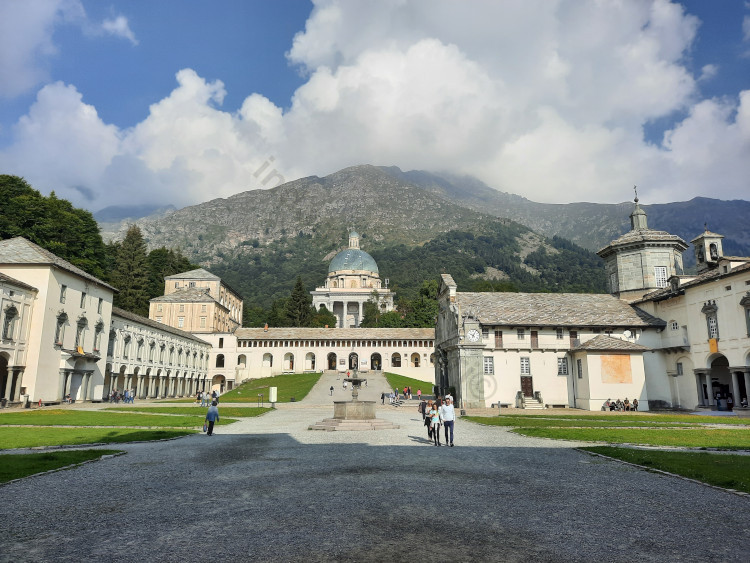
From the Eusebian Sacellum to the New Basilica
Today the Basilica Antica is the heart of the sanctuary of Oropa, spatially and figuratively. It encloses the Eusebian sacellum, a center of worship, where hundreds of thousands of people a year go to venerate Our Lady. Even the Savoia family contributed to the enrichment of the complex, as Charles Emmanuel I had made a vow to Our Lady of Oropa for healing from a physical ailment. The Basilica was then surrounded by a portico, later oriented to the south during the 18th century. The Sanctuary was thus turned toward the Piedmont plain, and no longer toward the transalpine direction, as the political interests of the Savoia changed. On the southern side, therefore, the architect Filippo Juvarra built the monumental Porta Regia.
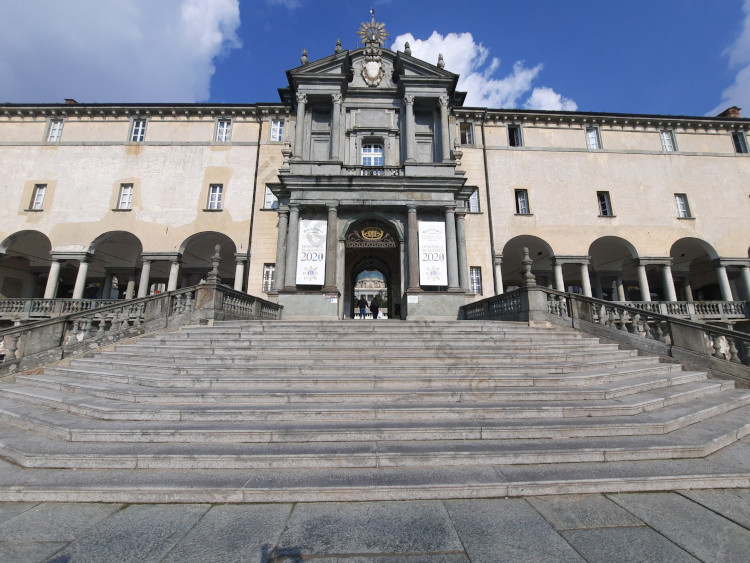
In the same years the nineteen chapels of the Sacred Mount of Oropa (1620), a UNESCO heritage site since 2003, were built. In addition, in the 18th century, the front hill of San Francesco was excavated in order to build a lower courtyard and a monumental staircase to access the Porta Regia.
The New Basilica was finally erected, the first stone of which was laid in 1854 and the last only in 1960. The imposing building that stands at the top of the complex, inspired by classical architectural forms, with a dome and a lantern, became necessary to accommodate the growing number of pilgrims travelling to Oropa.
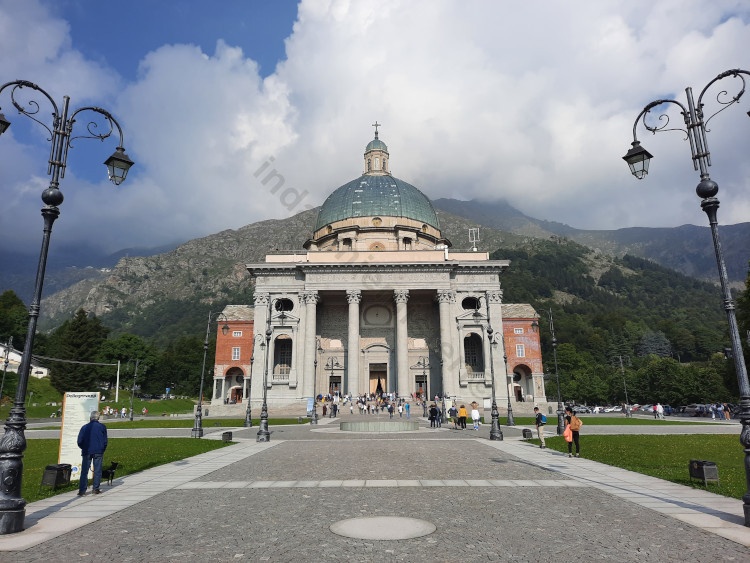
Oropa Sanctuary, from paganism to Marian worship
Tradition credits Eusebius with importing from the East not a simple object, but a true cult, an iconoduly that, by the material representation of Our Lady, aimed at venerating the mother of Christ whose is in heaven. The legend has its origins in the religious syncretism that was spread in Piedmont since the fourth century. At that time, in fact, the region was predominantly pagan. In the area, especially in the country villages (pagi), rites to Roman deities were officiated; near the Alps, however, Celtic cults were still vivid4.
As Christianity diffused among pagan peoples, a phenomenon of cultural accommodation took place. The bishops allowed the veneration of icons to make the new cult more familiar. Pagans, in fact, worshipped statues, necessary containers of the deity that expressed his real presence. This explains why representations of the gods were so widespread, placed in every sphere of daily life. Christianity, however, turned veneration from the simulacrum (proskinesis) to just the person depicted in it (douleia). The process was not without historical-theological controversy, but the Eusebius’ time was still far from the ideological turmoil of the iconoclastic struggle (8th century).
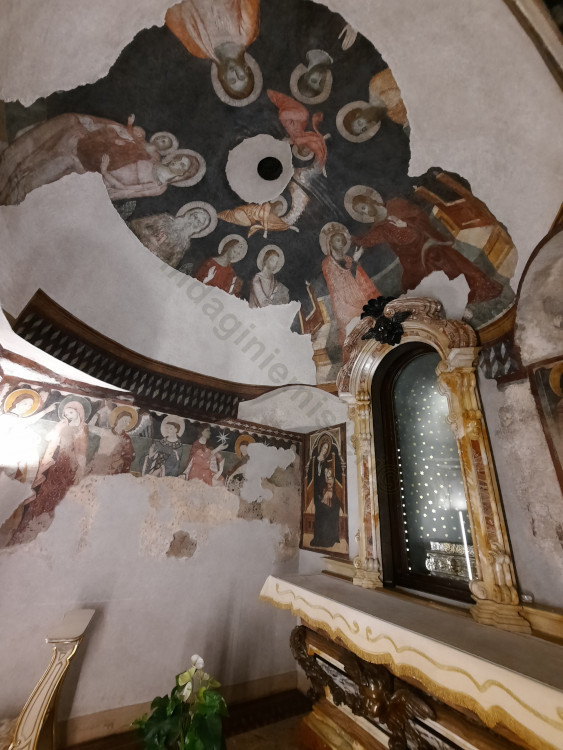
Celtic fertility cults and erratic boulders
In addition, popular tradition states that St. Eusebius hid the statuette of Our Lady in a ravine, carved under a huge boulder. This detail, too, is part of the process of adaptation of the cults that took place in Piedmont in the 4th century. Here, in fact, Celtic beliefs about erratic boulders were still attested5. The presence of solitary rock structures, isolated from their context and seemingly arising from nowhere, was interpreted as a hierophany, a manifestation of the divine. Today we know that erratic boulders were transported to the alpine valleys by melting glaciers in ancient times, but to the people of the time they were a manifestation of the sacred. These rocks believed to be generated from the earth, used as shelters and called balme, were consecrated to the Mother Goddess in fertility rites.
St. Gregory the Great revealed in a missive to Abbot Mellitus that in the time of St. Martin of Tours, a contemporary of Eusebius, it was common to re-consecrate Celtic altars and erratic boulders. This re-sacralization is also evident at Oropa; the Basilica Antica incorporates an erratic boulder on its left side. However, apotropaic magical credences related to the worship of these stones have survived, in popular form, for many centuries. At Oropa, for example, boulders were believed to promote fertility if one made nine turns around them, and near Sacro Monte di Varallo, as elsewhere, barren women rubbed their backs against them6. Thus, the cultic overlap between the Madonna of Oropa and the Celtic Mother Goddess appears evident.
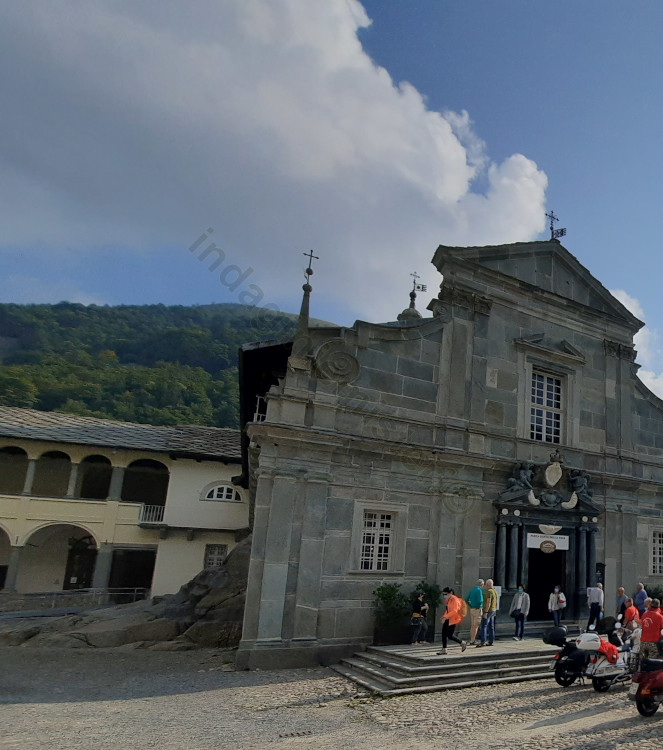
The cult of the Black Madonna
A debated issue concerns the black color of some statues of the Virgin widespread in Europe, including the simulacrum of Regina Montis Oropae. The causes of this singular characteristic are often varied, depending on the local context: reuse of pagan statues, turning black due to physical factors, a particular iconography… Indeed, at Oropa it is likely that the 13th-century wooden statuette was originally light-colored. This observation could be hypothesized on the basis of a similar case in Crea, where restorations in 1981 discovered that the Madonna was originally polychrome, and only later was it repainted black.

So, why the Madonnas of the Piedmontese Eusebian sanctuaries were purposely depicted black? A first explanation could be given, once again, by tradition. According to the legend, Eusebius brought the Madonna from the East. The icon most venerated in Constantinople in Byzantine times, the Odighitria, who “shows the way,” was dark. Byzantine iconography required the use of gold or a brown tint to render the idea of the spiritual dimension of the subject and to cover the divine light that ideally emanated from it. Both at Oropa and Crea the face of the Madonna was likely repainted to make the Eusebian legend more plausible and to simulate a Byzantine ancestry.
Otherwise, it could be that the sculptures darkened over time due to natural causes and were repainted black, during a recoloring between the 17th and 18th centuries, assuming it was the original skin color. It is possible that this recoloring found its justification in popular devotion, which referred to the Virgin the words of the Queen of Sheba taken from the Song of Songs, “nigra sum sed formosa“.
Samuele Corrente Naso
Notes
- Jacopo Orsi, Cronaca Bugellae, 1488. ↩︎
- L. Groppo, O. Girardi, Nigra sum. Culti, santuari e immagini delle Madonne nere d’Europa. Atti del convegno internazionale, Santuario e Sacro Monte di Oropa, Santuario e Sacro Monte di Crea, 20-22 maggio 2010. ↩︎
- S. Noto, L. S. Olschki, La Valle d’Aosta e l’Europa, 2008. ↩︎
- M. Trompetto, S. Eusebio di Vercelli, Biella, 1961. ↩︎
- L. Motta, M. Motta, I massi di Oropa, in Massi erratici, Torino, Museo regionale di scienze naturali, 2013. ↩︎
- E. Poletti Ecclesia, Antigorio, antica terra di pietra. Ambiente, geologia, archeologia, arte e tradizione di una valle alpina, 2012. ↩︎


